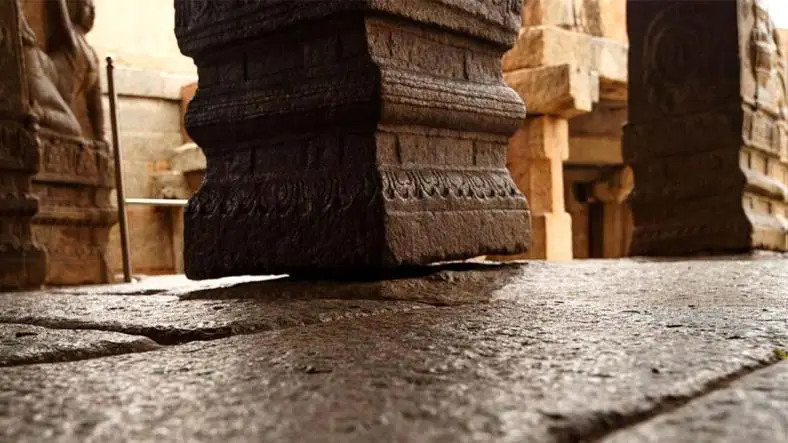A nature scavenger hunt is a delightful and educational science experiment that encourages children to explore the outdoors while learning about their natural environment. This activity combines adventure with observation, helping children develop their understanding of nature, enhance their observational skills and foster a sense of curiosity. Here’s a step-by-step guide to organizing a nature scavenger hunt.
Materials Needed:
- Scavenger Hunt List: A printed or handwritten list of items to find.
- Clipboards or Notebooks: For keeping track of findings.
- Pencils or Pens: For marking items off the list.
- Magnifying Glasses: Optional, for examining small details.
- Camera or Smartphone: Optional, for taking photos of found items.
- Binoculars: Optional, for observing distant objects.
- Bags or Containers: For collecting samples (optional).
Step-by-Step Guide:
1. Plan the Scavenger Hunt:
- Choose a Location: Select a suitable outdoor area for the scavenger hunt, such as a park, garden, or natural trail. Ensure the location is safe and appropriate for the age group.
- Create a Scavenger Hunt List: Prepare a list of items or clues related to nature that participants need to find. You can tailor the list based on the location and the age group of the children.
2. Sample Scavenger Hunt List:
- Common Items:
- A leaf with a unique shape
- A feather
- A pine cone
- A flower of a specific color
- A rock with interesting patterns
- Evidence of animal activity (e.g., nests, tracks)
- Seasonal Items:
- Spring: A budding flower, an insect, a fresh sprout
- Summer: A butterfly, a ripe fruit, a bird's nest
- Fall: An acorn, a colorful leaf, a fallen twig
- Winter: Icicles, a pine needle, animal tracks in the snow
- Clues or Challenges:
- Find something that makes a noise when you touch it.
- Look for an object that reflects sunlight.
- Find an item that has an unusual texture.
3. Prepare the Participants:
- Explain the Rules: Briefly explain the rules of the scavenger hunt, including safety guidelines and how to mark off items on the list.
- Distribute Materials: Give each participant or team a scavenger hunt list, clipboard and pencil or pen. Optional: provide magnifying glasses or binoculars.
4. Conduct the Scavenger Hunt:
- Set a Time Limit: Decide on a time limit for the scavenger hunt based on the length of the list and the size of the area. Typical hunts last between 30 minutes to 1 hour.
- Start the Hunt: Allow participants to explore the outdoors and search for the items on the list. Encourage them to use their observational skills and take their time.
- Check Off Items: As participants find items, they can mark them off the list. If using a camera or smartphone, they can take photos of their findings.
- Collect Samples: If appropriate, participants can collect small samples (e.g., leaves, rocks) to examine later. Ensure they only collect non-living items and leave living things in their natural habitat.
5. Review and Discuss Findings:
- Gather Participants: After the scavenger hunt, gather everyone together to review their findings.
- Share Discoveries: Allow participants to share what they found and discuss interesting observations. Ask questions to encourage further exploration and learning.
- Discuss Nature: Talk about the different types of plants, animals and objects found during the hunt. Discuss how these items fit into the ecosystem and their role in nature.
6. Extend the Activity:
- Create a Nature Journal: Encourage participants to create a nature journal where they can draw or write about their findings and observations.
- Make a Nature Collage: Use collected samples (if applicable) to make a nature collage or display.
- Explore Further: Plan additional outdoor activities such as bird watching, plant identification, or nature walks to continue exploring nature.
Scientific Concepts Explored:
- Ecology: Understanding different plants, animals and natural objects and their roles in the ecosystem.
- Observation: Developing skills to closely observe and identify natural elements.
- Classification: Learning to categorize different types of natural items based on their characteristics.
Tips for Success:
- Safety First: Ensure that the area is safe and that children are supervised at all times.
- Encourage Exploration: Allow children to explore and make their own discoveries. Avoid guiding them too much.
- Adapt the List: Adjust the scavenger hunt list based on the age and interests of the participants.
Safety Considerations:
- Protective Clothing: Ensure children are dressed appropriately for the weather and terrain.
- Avoid Harmful Plants: Teach children to avoid touching plants that may be harmful or cause allergies.
- Hydration: Ensure children stay hydrated, especially on hot days.
Conclusion:
A nature scavenger hunt is a fun and educational activity that promotes exploration and learning about the natural world. By searching for and observing various items in nature, children develop a deeper understanding of their environment and gain valuable scientific skills. This hands-on activity fosters curiosity, enhances observational abilities and encourages a love for the outdoors.
Thanks for reading the article, for more Science and Technology related articles read and subscribe to peoples blog articles.














